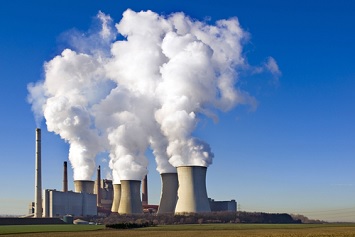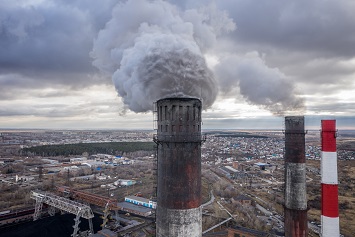The EPA’s implementation of Clean Air Act (CAA) Section 110(a)(2)(D)(i)(I), also known as the Good Neighbor Provision, has been a source of conflict among the Agency, the states, industry stakeholders, and public health and environmental interest groups. That trend is continuing with the Agency’s latest action, a final rule that establishes that 20 eastern states have no obligations with respect to the 2008 National Ambient Air Quality Standards (NAAQS) for ozone to require that their fossil fuel power plants take further action to reduce emissions of pollutants that contribute to ozone formation in downwind states.
The rule takes two key steps. First, it withdraws a determination the EPA made in October 2016 in its update of its Cross-State Air Pollution Rule (CSAPR Update) when it issued Federal Implementation Plans (FIPs) that the Agency then stated would “partially” help upwind states meet their Good Neighbor responsibilities in 2017 (called the analytic year). Second, the new rule changes the analytic year to 2023, when, the EPA says, there will be “no remaining monitors expected to have difficulty attaining or maintaining the 2008 ozone NAAQS.” This means, the EPA continues, that the 2016 FIPs fully implement both the CSPAR Update and the Good Neighbor obligations of the affected states.
The use of 2023 as the analytic year is probably the most controversial part of the EPA’s final rule. Year 2023 considerably postdates the ozone NAAQS attainment deadlines for the relevant downwind areas. For example, areas in moderate nonattainment with the 2008 NAAQS had an attainment date of July 20, 2018. The EPA justifies the 2023 analytic date because power plants in the eastern U.S—the primary subject of regulation to address the transport of ozone precursors such as nitrogen oxides (NOx) and volatile organic compounds (VOCs)—will need at least 48 months to install the necessary pollution control equipment, mainly selective catalytic reduction (SCR). The EPA bases its use of 2023 as the analytic year on the presence of the word “will” in the Good Neighbor Provision.
“The EPA reasonably interprets this language as permitting states and the EPA in implementing the Good Neighbor Provision to prospectively evaluate downwind air quality problems and the need for further upwind emission reductions,” says the Agency.
Opponents of the final rule argue that this interpretation of “will” is inconsistent with the plain language of the provision.
“Congress specified that implementation plans must prohibit ‘any’ pollution from ‘any’ source that will contribute significantly to nonattainment and interfere with maintenance, and this includes pollution that will do so between now and 2023,” wrote a coalition of environmental groups in comments on the EPA’s proposal for the current action.
Below, we expand on the EPA’s current action and reactions to it.
2016 Update Rule
The Good Neighbor Provision requires that states prohibit emissions that will contribute significantly to nonattainment or interfere with maintenance in any other state with respect to the NAAQS. The CAA vests states with the primary responsibility to address interstate emissions transport through the development of Good Neighbor State Implementation Plans (SIPs). If a state fails to submit a SIP or if the EPA disapproves a submitted SIP, the CAA also requires the EPA to fill a backstop role by issuing a Good Neighbor FIP.
In the CSAPR update rule, the EPA issued FIPs for 22 states that failed to submit approvable SIPs addressing interstate emissions transport for the 2008 ozone NAAQS. The FIPs require affected power plants in each covered state to reduce emissions beginning with the 2017 ozone season. As noted, the EPA promulgated the FIPs as a “partial remedy” because a full remedy was not achievable by 2017.
“The NOx emission reductions in this final rule are needed (although they may not be all that is needed) for these states to eliminate their significant contribution to nonattainment or interference with maintenance of the 2008 ozone NAAQS,” stated the EPA.
2023 Analytic Date
In the current action, the EPA changes its position. “Based on information and analysis that became available after the CSAPR Update was finalized, this action finalizes a determination that the existing CSAPR Update fully addresses CAA section 110(a)(2)(D)(i)(I) for the 2008 ozone NAAQS for all remaining CSAPR Update states,” the Agency now says.
The core of the new analysis is the 2023 analytic date. The EPA notes the “forward looking nature” of the Good Neighbor obligations.
“With respect to the statutory language of the good neighbor provision, the statute requires that states prohibit emissions that ‘will’ significantly contribute to nonattainment or interfere with maintenance of the NAAQS in any other state,” the Agency says. “The EPA reasonably interprets this language as permitting states and the EPA in implementing the good neighbor provision to prospectively evaluate downwind air quality problems and the need for further upwind emission reductions.”
Based on a reading of the Good Neighbor Provision that offers flexibility regarding deadlines, the EPA builds its analysis on what it perceives to be the time needed to plan for, install, test, and place into operation power-plant NOx reduction strategies regionally—that is, across multiple states. As noted, the Agency believes SCR to be the optimal NOx control strategy with a NOx reduction efficiency of up to 90 percent. The Agency compares SCR to selective non-catalytic reduction (SNCR), which can be installed faster—generally in about 16 months—but which offers a lower level of NOx control, about 25 percent. The Agency notes that installing new NOx controls, whether SCR or SNCR, involves analyzing feasibility, finalizing contracts, obtaining permits, installing the equipment, and conducting tests.
Given the extra value of SCR controls due to their greater NOx reduction efficiency and cost-effectiveness, as well as the time to regionally develop and implement SCR as a control strategy for the CSAPR Update states, the EPA concluded that 48 months would be a reasonable and expeditious time frame to coordinate the planning and completion of further regional NOx mitigation efforts. All of which led the Agency to the 2023 analytic date.
Homer City Agrees
The EPA’s interpretation of the Good Neighbor Provision and particularly the 2023 analytic date was supported by Homer City Generation, L.P., an energy company that played a key role in a U.S. Supreme Court case that upheld the Obama administration’s CSAPR. Homer City said its experience indicated that installation of new air pollution controls to address NOx and other emissions must take into account factors such as the need for an extended outage to install controls.
“Such outages are typically scheduled years in advance and typically involve projects with significant planning, equipment and contractor procurement lead times,” stated Homer City in comments on the EPA’s proposal for the current action. “The multiple steps that are necessary for the initial design and approval of complex air pollution systems include commencement and completion of engineering for system components; submission of plans and applications for necessary state approvals; issuance of purchase orders for control system components; time necessary for manufacture and delivery of air pollution controls; commencement and completion of construction of the required controls; and time necessary for shakedown and necessary compliance demonstrations. Especially where multiple EGUs [electric generating units] are targeted for additional emission reductions, it is proper to recognize the availability of skilled labor, as EPA has within the proposed rule.”
Homer City concluded, the “EPA’s selection of 2023 is a reasonable date when additional NOx reductions could be achieved, and is in accord with Homer City’s recent experience with respect to the installation of NOx controls.”

Downwind States Do Not
But also in comments on the proposal, states argue they cannot come into attainment with the 2008 ozone NAAQS because of upwind pollution and that the EPA’s action absolves upwind states from taking any additional actions to reduce their impact on downwind states.
David F. Fees, acting director of the Delaware Division of Air Quality Fees, offered the following comment on the current rule when it was proposed:
“EPA’s decision to effectively do nothing and wait until 2023 to satisfy states’ good neighbor obligations is a complete abdication of EPA’s mission to protect public health and the environment and in violation of the Clean Air Act. EPA’s proposal includes too many questionable parameters and predictions, and not enough enforceability, to ensure that the projected results (attainment of the 2008 ozone NAAQS by every monitor in the nation outside of California) are even remotely valid and based in reality. Cost effective actions can be taken now to address impacts on downwind states by requiring existing NOx controls to be operated and optimized throughout the ozone season and assuring that emission limits are consistent with the averaging time of the standard. For sources that currently do not have post-combustion controls but have the ability to use natural gas, enforceable requirements that only natural gas may be used during the ozone season should be finalized.”
Moreover, in comments submitted in an August 1, 2018, public hearing, Benjamin Grumbles, secretary of the Maryland Department of the Environment, said the EPA’s contention that significant downwind contributions cannot be reduced without new controls is “irrelevant.” This position includes criticism of both the current rule and the 2016 Update rule. Grumbles explains:
“Maryland has shown in our CAA section 126(b) petition that there are large, immediately available emission reductions that can be achieved by simply requiring coal-fired power plants in the CSAPR Update region to optimize the use of their existing control technologies (consistent with each unit’s past-best historical emissions rates) every day of the ozone season. The CSAPR Update does not do this; it allows power plants to pick and choose which days to fully optimize their control technology based upon cost. Under the CSAPR Update, power plants are legally allowed to operate without running existing controls on any given day if ‘allowances’ are cheaper to buy than running control or if the electric generating unit (EGU) is running less than in past years, as long as the power plant meets the CSAPR Update long-term, ozone season tonnage caps. This means that power plants are allowed to not run their controls on the hottest summer days. For ozone, these are the days that the controls are needed the most.”
Finally, some downwind states believe the EPA’s rule results in economic disparities. In comments on the proposal, Basil Seggos, commissioner of New York State’s Department of Environmental Conservation, wrote that states in the New York Metropolitan Area have already implemented more control measures than most “if not all” states in the eastern United States.
“For example, in New York, the most recently available cost data estimate that the marginal cost of additional NOx reductions is more than $5,000 per ton of NOx removed,” Seggos wrote. “In contrast, the marginal cost of additional controls EPA has used to determine the cost-effectiveness in the CSAPR Update was $800 per ton of NOx removed estimated to optimize existing and operation SCR units. The inequity of control requirements between upwind and downwind states will continue to grow with this proposed action as New York, which will have no more coal-fired power by 2020, is forced to impose additional in-state controls on other sources and consumer products to offset the burden of transported pollution from upwind coal-fired plants.”

